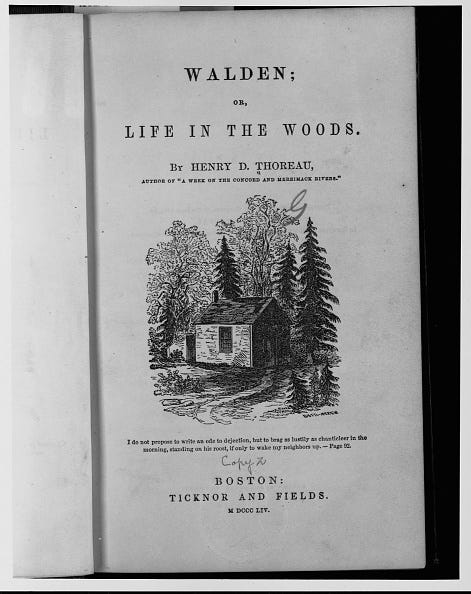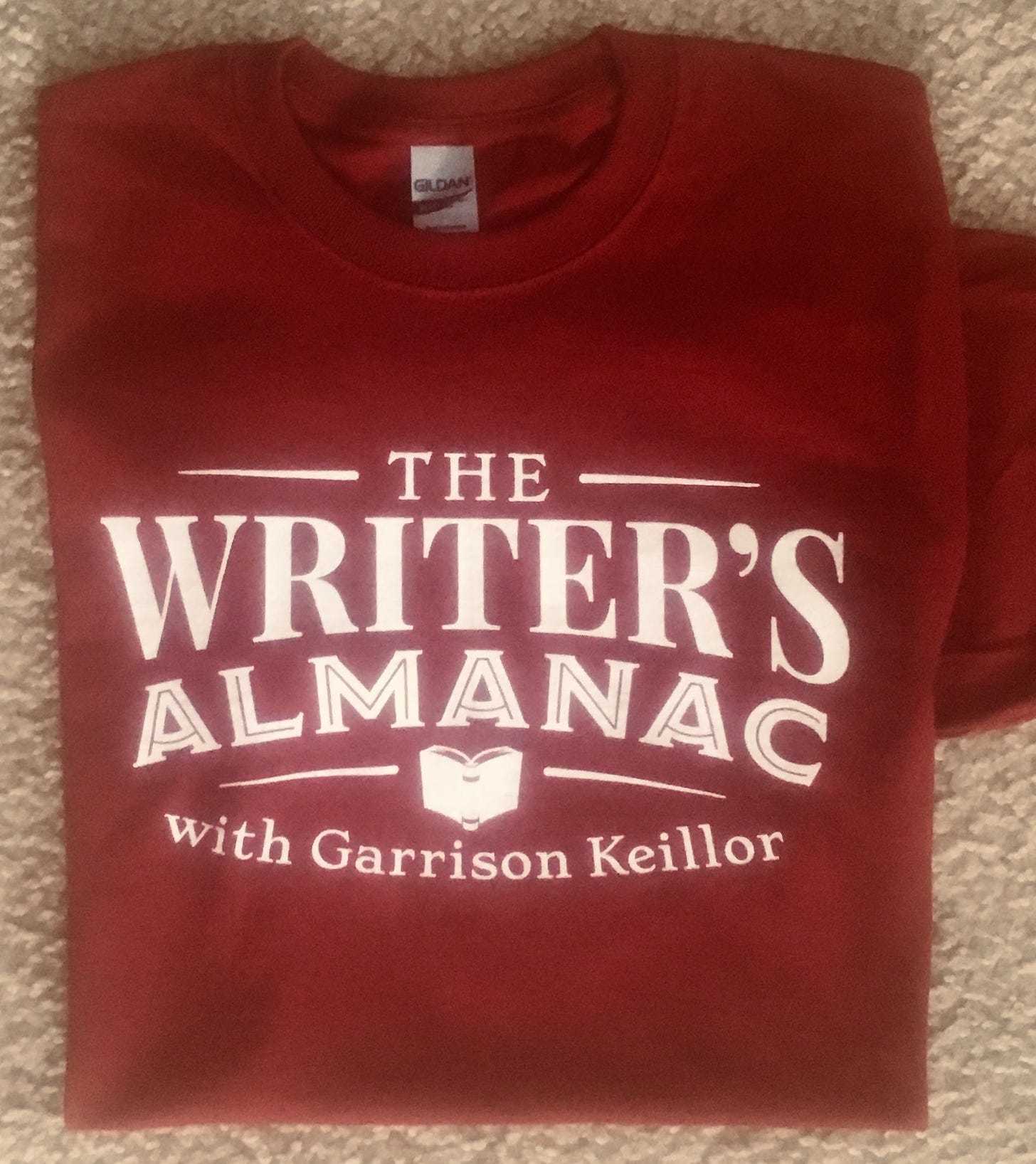The Writer's Almanac for Friday, July 12, 2024
"Leaving" by Richard Wilbur, from Collected Poems. © Harcourt, 2004.
ORIGINAL TEXT AND AUDIO - 2013
It's the birthday of the man who said: "I went to the woods because I wished to live deliberately, to front only the essential facts of life, and see if I could not learn what it had to teach, and not, when I came to die, discover that I had not lived." That's Henry David Thoreau, born David Henry Thoreau in Concord, Massachusetts (1817). He grew up exploring the woods and fields of Massachusetts, encouraged by his mother to learn as much as he could from nature. He went to Harvard, but he didn't like it very much — he refused a diploma since it cost five dollars. He worked for a while in his father's pencil factory, and as a public school teacher, and he became close friends with Ralph Waldo Emerson. In 1841, the Emersons invited Thoreau to live with them and work as a handyman and gardener, and he helped take care of their children, taking them on nature walks and telling them stories. Thoreau stayed with the Emersons for two years. During that time, he worked on his writing, and through Emerson, became friends with many of the Transcendentalists.
In 1844, Emerson bought land on the shore of Walden Pond. Walden Pond was a pristine, 61-acre pond, surrounded by woods, and Emerson agreed to let his friend live on the land and build a cabin there. People often assume that Thoreau went out into the wilderness to write his famous treatise on nature, but in fact, he was living less than two miles from the village of Concord. He had regular dinners with friends, continued to do odd jobs for the Emersons, and had frequent visitors. The book he was so committed to writing at Walden Pond was called A Week on the Concord and Merrimack Rivers, about a trip he had taken with his brother. He finished it and published it himself, but it was a flop — selling fewer than 300 copies.
But during the two years he was at Walden Pond, he also kept a journal, and after he left, he put it together as a manuscript. In 1854, he published Walden, or Life in the Woods, which has become a beloved classic.
It's the birthday of the man who gave us the Kodak camera, George Eastman, born in Waterville, New York. He was working at a bank when he got interested in photography around 1877. He took his first dry-plate photograph the next year with the camera that he invented — a view of the building across the street from his window. He developed this little handheld camera, and he called it the Kodak because it was easy to remember, difficult to misspell, and it meant nothing, so it could only be associated with his product.
Be well, do good work, and keep in touch.®






Where is Garrison? I subscribed to him doing TWA, not this guy. Bless his heart, but he’s no Garrison.
"It's ALMOST the birthday of thIS FORMER YOUNGSTER who USED the Kodak camera, AND LEARNED TO PUSH THE SIDE SHUTTER QUICKLY AND HELD TIGHT THE CAMERA. I WON $.50 FROM THE PIONEER PRESS FOR A PHOTO I TOOK OF MY YOUNG SISTER MARY INHALING A PEONY. YOU CAN ALMOST SMELL IT YOURSELF, CONTRAPUNCTIVE TO THE WALK IN THE WOODS AND INHALE THE VAPOR OF THE POND.
THERE ARE MANY FINE ALUSIONS WITH KODAK DURING THOSE PHOTO-CAPTIVE TIMES. SOON CAME MY DARKROOM AND CHEMICAL SMELLS WORTH THE PUNGENCY. IT'S NOT